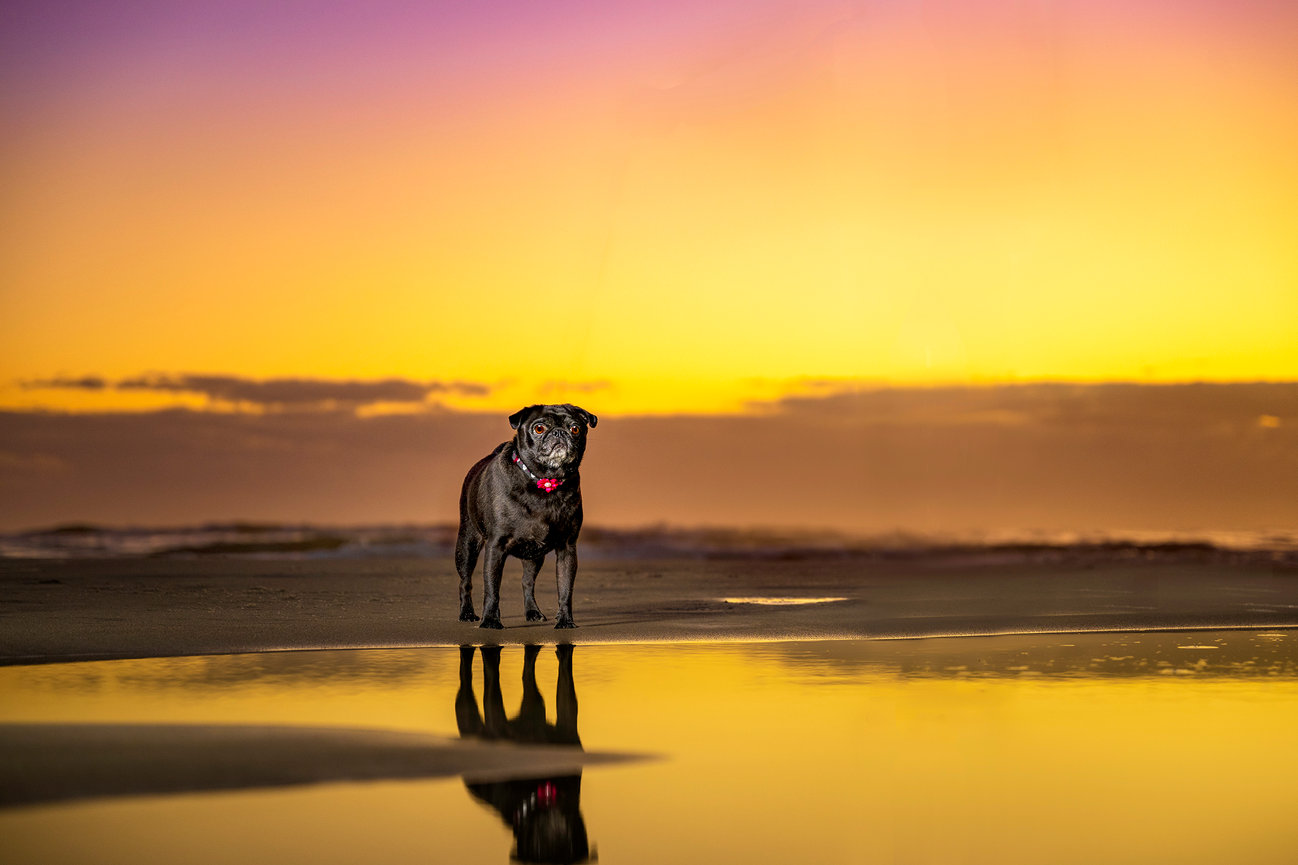Sunny Paws: Essential Summer Grooming Tips for Florida Dogs
Thursday, July 18, 2024 | By: The PAWtographers
Summer Grooming Tips for Your Florida Dog
1. The Great Fur Debate: To Shave or Not to Shave?
OMG wanna start a heated conversation that rivals that of politics and or religion? Tell someone they should (or should not) shave or clip their dog's coat short for the summer. If you'd like to read an article written by a groomer (who really did lengthy research on the topic), hop over to this article here: Clipping the Dog Short for the Summer.
If you'd like my take on the topic, which is based SOLELY on personal experience and contains no scientific research whatsoever, I never shaved my rotties (I just kept them well brushed to remove as much undercoat as possible and bathed).
My Havanese are another story. They were only in full coat if they were being shown and they were pretty miserable. Everyone is retired and clipped down, and I can say that if I let my Havanese grow more than an inch of coat, they act like they're dying from heat in the air conditioned house.
Claim: If you clip a double coated breed the coat will grow back patchy! Again, here is my totally unscientific but true experience. One of our show girls (Havanese) came to us as an adult dog that was completely clipped down. No, not clipped, shaved to the skin. So,we had to grow her coat out in order to show her. Havanese have double coats and it came out thick, lush and perfect.
So what's the right choice? Consult your groomer to find the best style for your dog’s breed and coat type, and do read the article highlighted above. It has references to shaved dogs regrowing double coats.
2. Brushing and Hot Spot Spotting
Regular brushing is essential during the summer months. Regular brushing helps remove loose undercoat in double-coated breeds, as well as any dirt or debris. a clean coat helps to prevent matting and promotes better air circulation. Aim to brush your dog at least a few times a week. For long-haired breeds, daily brushing is ideal.
While brushing, keep an eye out for hot spots. Hot spots on dogs, also known as acute moist dermatitis, are typically caused by irritation that leads the dog to lick, chew, or scratch a specific area excessively. This irritation can be triggered by various factors, including matted fur, allergies, parasites, etc. Caught early, hot spots are easier to treat.
3. Sunscreen for Dogs?
It's not just for hairless breeds! Sunscreen for dogs is essential to protect their skin from harmful UV rays, especially for breeds with short hair, light-colored fur, or exposed skin areas like the nose and ears. Without protection, dogs are at risk of sunburn, skin damage, and even skin cancer, making sunscreen an important part of their overall health care regimen.
DO NOT USE HUMAN SUNSCREENS!! Canine-specific sunscreens are formulated to be safe for dogs, avoiding ingredients that could be toxic if licked, such as zinc oxide, PABA, and fragrances.
The American Kennel Club (AKC) released a great article on this topic, "Do Dogs Need Sunscreen?" that you can read HERE. And here's a link to a recommended dog sunscreen on Chewy HERE.
4. Bath Time Bliss
Bathing helps to keep your pup clean and fresh, and it also assists in removing shed hairs. Use a gentle, dog-specific shampoo. Depending on your dog’s activity level, a bath every 2-4 weeks is usually sufficient. After a fun day at the beach, make sure to rinse off any salt and sand to prevent skin irritation. For those pups with allergies (like one of my Havanese), rinsing regularly after they are outside helps to remove allergans, and weekly baths with a medicated shampoo from my veterinarian to calm her skin works wonders.
5. Paws and Pedicures
Hot pavement and sand can be tough on your dog’s paws. REMEMBER: If you can't comfortabley stand barefoot on the surface for seven seconds or longer (no cheating!), it's NOT okay for your dog's paws. Even with this test, long walks on hot surfaces can burn or irritate your pup's paw pads, so keep an eye out for any signs of irritation.
Nails: If walking doesn't keep your pup's nails nice and trim (if it's really hot outside, your daily walks may be earlier and much shorter, so the nails don't get filed down on the regular as they do in cooler weather), you'll need to trim them yourself or take your pup to the groomers regularly.
6. Ears, Eyes, and Teeth
Summer grooming isn’t just about the fur. Pay attention to your dog’s ears, eyes, and teeth too. Clean their ears regularly to prevent infections, especially if they’re swimming a lot. We use a medicated ear solution for our dogs after all swims (they love swimming in the pool in the summer), as well as after baths. Check their eyes for any signs of irritation or infection (we sometimes get eye infections when the allergies are at their peak season in the early summer that requires medicated drops). Lastly, don’t forget dental hygiene! Regular brushing and dental chews can keep their teeth sparkling and their breath fresh.
7. Hydration and Shade
While not a grooming tip per se, keeping your dog hydrated and cool is crucial in the Florida heat. Always have fresh water available and provide plenty of shade when outdoors. Avoid the hottest parts of the day for walks and playtime; early mornings or late evenings are best, and even then be aware that it is very hot and humid, so consider shortening your walks. You can also invest in a kiddie pool or cooling mat to help your pup chill out. For more information on dogs and preventing heat exhaustion and or heat stroke, check out blog post HERE.
8. Flea and Tick Prevention
Florida’s warm climate is a paradise for fleas and ticks. Ensure your dog is protected with regular flea and tick prevention treatments. Check them thoroughly after outdoor activities, especially if they’ve been in grassy or wooded areas. A quick comb-through with a flea comb can help catch any hitchhikers.
Final Woofs
Grooming your dog in the Florida summer is all about keeping them comfortable, healthy, and (of course) stylish. So, grab your sunscreen (and your dog's!), a bowl of cold water, and hit the beach with your perfectly groomed pup. Summer fun awaits!






Leave a comment
0 Comments